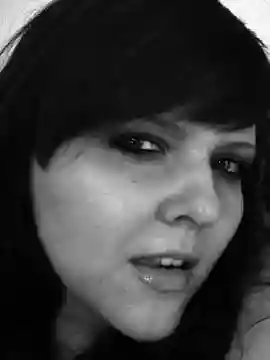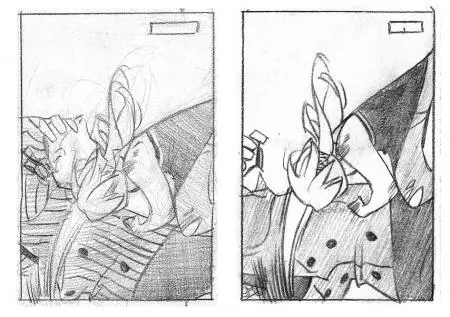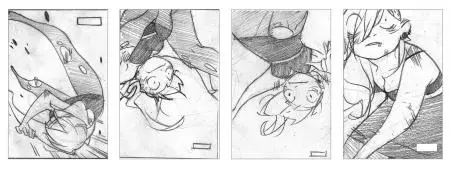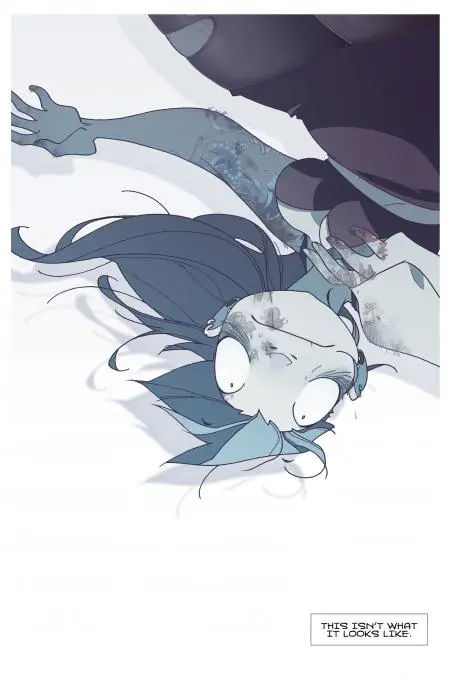Don't Write Comics is a multi-part essay about writing comics, understanding what your options are, finding the right artist, and everything you need to do to get a strong comic book pitch package together.
We’re in the home stretch!
At this point in the process you’ve secured your artist, and you have at least one full issue of your series written. Your artist has read that issue, loves it, and can’t wait to get to work. If you’re paying your artist (as I discussed in Part 3 and highly recommend) then you should probably transfer some of the funds at this point. Meredith McClaren, my partner on Heart In A Box and I decided on 50% upfront as a deposit and 50% upon completion. It’s a fair and simple way to do it as far as I’m concerned, but that’s between you and your artist (and you and your sad bank account).
AGREEMENTS
However, you have one more small technical hurdle before you can get to the fun stuff. And that is coming up with an agreement or contract between writer and artist. I always recommend using an agreement, whether you are strangers or best friends, because no matter how well-intentioned everyone is at the outset it never hurts to have clarity between all parties, and a clarity that is written down, dated, and signed, is best. People have different memories of how things play out; they also have different interpretations of things, so it’s best to have this all spelled out so nobody is disillusioned (or pissed) and nobody ends up in court. I know it sounds extreme and you’re thinking, “It’s just really not necessary for this project or for me and this person,” but some of the best advice I ever heard regarding contracts was to imagine the absolute worst case scenario. In the beginning everyone is happy and optimistic, excited and on the same page. But a lot happens between the beginning and “The End” and it’s best for EVERYONE involved if there’s an understanding on paper. We all hope that things remain happy and optimistic, and one of the best ways to make sure they do is a clear understanding of the terms. That said, before you can even search for an agreement to use, you need to decide if your project is “work for hire” or “creator-owned”.
A “work for hire” agreement means that you are not sharing any ownership or profit with your artist, and are simply paying them a page rate (or lump sum, etc.) to execute a project. The benefit in that is that you stand to make all the profits for the project and the costs for your artist are essentially one-time fees. Additionally, depending on the type of agreement, you may end up owning all the actual work that is created. You can find a lot of examples of these agreements simply by doing a Google search. Heres are a couple simple ones that you could modify to suit your needs.
A “Creator-Owned” agreement means that you and the artist are both going to be listed as creators and will share in the profits, both for the current project and for future projects that may come from it, such as film rights being sold. For Heart In A Box, the answer was obviously to do a Creator-Owned agreement as Meredith was doing far more than anything I would describe as “work for hire” and I wanted a partner in crime, not an employee. But that might not be right for your project; only you and your artist can figure that out. Again, the internet can give you some great samples of this type of agreement, here’s one I really liked and modified to suit the needs of Heart In A Box.
COLLABORATION
Once you’ve hammered out your agreement, you are ready to go!
And this brings us to my favorite part (especially if you’ve written the whole project, and not just issue #1) because now, while someone works their fingers to the bone on your project, you can move on to the next project. Write the next comic book script or novel or column-- whatever’s on your plate. You move on, while momentum continues in the background. It’s awesome. It feels like the ultimate in multi-tasking. My dream is now to be in a position where I’ve got multiple projects going on all at once. It’s such a wonderful change from being that person alone in the room with your computer -- the only one that can possibly make anything happen. Now you’re part of a team and while you can shift focus to something new, they’re continuing to flesh out what you began... like the handing off of the baton in a relay race. And if you've picked the right racing partner, it's far less stressful and far more rewarding than you can imagine.
Meredith and I work in a wonderful way. She likes to do thumbnails, which helps both of us agree on what we want before she finalizes things and minimizes how much work has to be re-done. A perfect example of how great collaboration can be and also how critical it is to communicate is the opening splash page for Heart In A Box.
The script called for a simple one panel splash page of the main character and one short caption:
PAGE ONE (1 panel)
Panel 1. Large splash panel. A girl (EMMA) punching a man (LARRY) in the face. This is not the punch of a fighter, but a lucky punch born of passion and more than a little desperation. Emma should be dressed in an outfit that looks as if she’s disassembled it to make it much more aggressively revealing than it originally was (we will see this scene later). Also note that Emma needs to have the “eye effect” we decide on in this panel (and pages 1 – 4) (see page 17, panel 1 for reference).
EMMA CAPTION:
This isn’t what it looks like
Meredith did exactly what the script called for and it was cool.
But neither of us thought it worked. Meredith kept revising, but as I looked at the pages I realized that it was the script that was wrong, not Meredith’s panel. So I did a slight revision:
PAGE ONE (1 panel)
Panel 1. Large splash panel of a girl (EMMA) being throw across a room, she looks like she’s getting her ass kicked. Emma should be dressed in an outfit that looks as if she’s disassembled it to make it much more aggressively revealing than it originally was (we will see this scene later). Also note that Emma needs to have the “eye effect” we decide on in this panel (and pages 1 – 4) (see page 17, panel 1 for reference).
EMMA CAPTION:
This isn’t what it looks like
And with that small tweak came a handful of amazing new thumbnails, all of which worked much better than our first try:
We eventually decided on a version of thumbnail #3, which we both loved and gave a much different and more accurate tone to the opening of the book. All it took was a small tweak to the script.
But never would I have realized that the script was the problem without Meredith’s collaboration. I like to believe she wouldn’t have realized it either, but that is perhaps too generous! Regardless, in the end it was the two of us working together that brought about the best possible pitch, one tighter than I ever imagined we would have. In the end, the pitch that we sent off (as one PDF file) to editors at a handful of carefully chosen comics publishers included:
1. A tight “Elevator Pitch” that included the words “full script available upon request”, clear specifications – the format, length, and type of project we were pitching, and a logline that summed up our project.
2. Six sequential art pages – this first six of the book - fully finished (inked, colored, and lettered).
3. A full synopsis of all six issues.
4. Character design – we included one character design of the main character on our last page which repeated all of our contact information (also listed on the opening pages).
5. We later added a cover illustration when following up with our editors.
Heart In A Box has, as of this writing, not yet been picked up, but we’ve had incredible responses from both editors and comics creators who have looked at the pitch. You never know what will work and what won’t, and timing is of course everything – you can do everything right for a great project, and still not get picked up. Regardless of whether this project makes it to a store near you, I feel confident that Meredith and I put together the strongest possible pitch we could, and sometimes that’s the best thing to have in your pocket. You never know who will want to see something of yours, or when, and having a perfect pitch ready and waiting can never hurt. Not only that, but working with Meredith has been such a joy that it was easily worth every penny and every moment of effort to find someone that I can't wait to collaborate with again.

About the author
Kelly Thompson is the author of two crowdfunded self-published novels. The Girl Who Would be King (2012), was funded at over $26,000, was an Amazon Best Seller, and has been optioned by fancy Hollywood types. Her second novel, Storykiller (2014), was funded at nearly $58,000 and remains in the Top 10 most funded Kickstarter novels of all time. She also wrote and co-created the graphic novel Heart In A Box (2015) for Dark Horse Comics.
Kelly lives in Portland Oregon and writes the comics A-Force, Hawkeye, Jem & The Holograms, Misfits, and Power Rangers: Pink. She's also the writer and co-creator of Mega Princess, a creator-owned middle grade comic book series. Prior to writing comics Kelly created the column She Has No Head! for Comics Should Be Good.
She's currently managed by Susan Solomon-Shapiro of Circle of Confusion.










